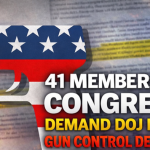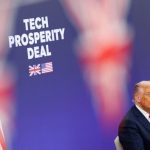
Federal Reserve Chair Jerome Powell hinted at upcoming interest rate cuts as risks to the central bank’s dual mandate—maximum employment and price stability—increase.
In his final keynote address at the Jackson Hole Economic Symposium on Aug. 22, Powell indicated that current economic conditions may warrant a reduction to the benchmark federal funds rate.
The U.S. labor market remains in a solid position, the central bank chief stated, despite the July employment report. Various job indicators, such as layoffs, nominal wage growth, and quits, have been little changed, while the unemployment “stands at a historically low level of 4.2 percent and has been broadly stable over the past year,” he said.
As for inflation, tariffs are creating upside risks, he stated, and levies are beginning to “push up prices in some categories of goods.”
According to Powell, the likely scenario is that tariffs will result in a one-time price shift.
“Of course, ‘one-time’ does not mean ‘all at once.’ It will continue to take time for tariff increases to work their way through supply chains and distribution networks. Moreover, tariff rates continue to evolve, potentially prolonging the adjustment process,” he said.
“Come what may, we will not allow a one-time increase in the price level to become an ongoing inflation problem.”
On the broader economy, Powell said that gross domestic product has slowed at a considerable pace in the first half of 2025, driven by a slowdown in consumer spending.
“As with the labor market, some of the slowing in GDP likely reflects slower growth of supply or potential output,” he stated.
Speaking to reporters during Powell’s speech, President Donald Trump confirmed that he will fire Fed Gov. Lisa Cook if she does not resign.
In a statement to The Epoch Times, Cook said she does not have any “intention of being bullied to step down” from her position.
Market Reaction
Powell’s comments assuaged investors’ concerns that he would signal that the Fed planned to remain patient before taking policy action.
The blue-chip Dow Jones Industrial Average increased by more than 600 points, or almost 1.5 percent. The tech-heavy Nasdaq Composite Index rallied by around 1.4 percent, while the broader S&P 500 rose by about 1.2 percent.
Yields on U.S. Treasury securities were red across the board, with the benchmark 10-year sliding below 4.27 percent.
The U.S. dollar index, a gauge of the greenback against a weighted basket of currencies, fell by 0.6 percent.
Gauging Rate Cut Temperatures
In recent weeks, investors have overwhelmingly anticipated a quarter-point reduction to the federal funds rate, a key policy interest rate that influences business, consumer, and government borrowing costs. It remained unchanged for the fifth consecutive meeting in July, within a target range of 4.25 percent to 4.5 percent.
Wall Street has trimmed some of its bets this week during the annual retreat.
Heading into Powell’s prepared remarks, a plethora of Fed officials offered a lukewarm reception to the prospect of lowering interest rates.
“We cannot wait for all of the uncertainty to be behind us,” Collins, a voting member on the Federal Open Market Committee, added.
Schmid said the next batch of reports released before the next policy meeting should indicate whether inflation is traveling in one direction or another.
“I think we’ve got some work to do,” Schmid said. “I think we want to continue to figure out how we keep pushing that number down toward two.”
The next key inflation reading will be the central bank’s preferred personal consumption expenditure price index for July. It will be released on Aug. 29, and early estimates suggest little movement in the annual rate.










